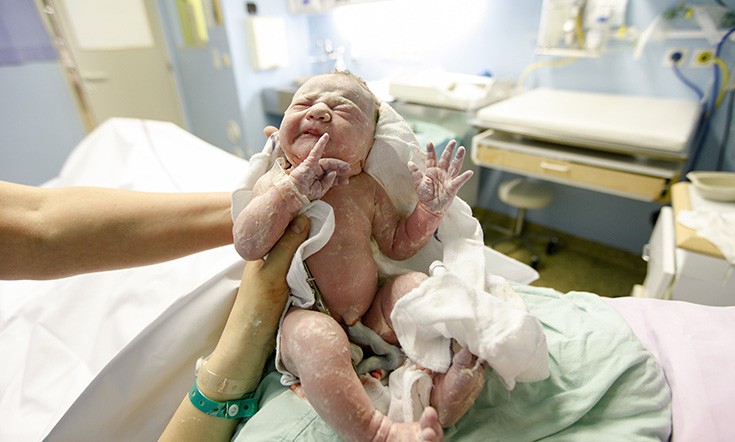

What is Delayed Cord Clamping?
Doctors and Midwives usually clamp the umbilical cord in two locations, near the infant’s navel and then farther along the cord, followed by then instructing the supporting partner/parent-of-the-baby to cut the cord between the clamps.
The timing of the procedure has been controversial for years. There is a substantial body of evidence suggesting that clamping often occurs too quickly after delivery.
Delayed cord clamping is a birth practice where the umbilical cord is not clamped or cut until after pulsations have ceased, or until after the placenta is delivered.
A growing number of parents are choosing delayed cord clamping for their baby in Australia and in some birthing units around the country this has become a part of normal practice unless there is a medical reason that it cannot be done.
The timing of clamping the umbilical cord and practices may have a sizeable impact on the outcomes of mother and baby. Research has shown that when we delay cord clamping the neonate will receive up to 30% more of the fetal-placental blood volume than it would have with immediate cord clamping.
How long does delayed cord clamping take?
Delayed cord clamping involves either delaying clamping by more than 1 minute after birth, or leaving the umbilical cord intact and pulsating until the placenta detaches from the wall of the uterus, somewhere between 1 and 3 minutes after birth.
What are the benefits of delayed cord clamping?
The benefits of delayed cord clamping for the baby include a normal, healthy blood volume for the transition to life outside the womb; and a full count of red blood cells, stem cells and immune cells.
In a Cochrane review study of 3911 women and infants over 15 trials it was also found that the babies had a higher haemoglobin levels, which in turn increases the newborn’s oxygen levels at birth and gives them a major boost with their iron levels for the first 3-6 months of life.
What are the risks of immediate cord clamping?
Large studies have shown that immediate cord clamping can result in lower iron stores in the baby for up to 6 months after birth. While not all the implications of a reduced iron status are understood, iron deficiency in the first few months of life can be associated with neurodevelopmental delay, which in some cases is irreversible.
There is still a lot more research to be done on this.
You are probably thinking “but my cord was cut right after birth and I am fine”, which is more than likely the case for most of the population, but there is a small percentage of babies that may have neurodevelopmental delay that might have been decreased if they had delayed cord clamping at the birth.
Until more research has been done on this side of the topic it is really hard to speculate.
What are the risks of delayed cord clamping?
Small studies have shown that delaying cord clamping increases the risk of jaundice. A study found that 3% of babies who experienced early cord clamping, compared to 5% of babies who experienced delayed cord clamping required treatment for jaundice.
Delayed cord clamping was not found to increase mortality rates for babies or mothers, nor were there any significant differences between the groups for postpartum haemorrhage.
Where do I go from here?
If delayed cord clamping is something that you would like to know more information about, or you would like to have this for your newborn at birth, make sure you discuss it with your Midwife or Doctor in your antenatal appointments.
It is important to do your own research on any topic related to birth or your newborn baby so I would recommend you reading a few up-to-date journal articles on the topic, discuss your options with your health care provider, and write a birth plan with your wishes on it.























